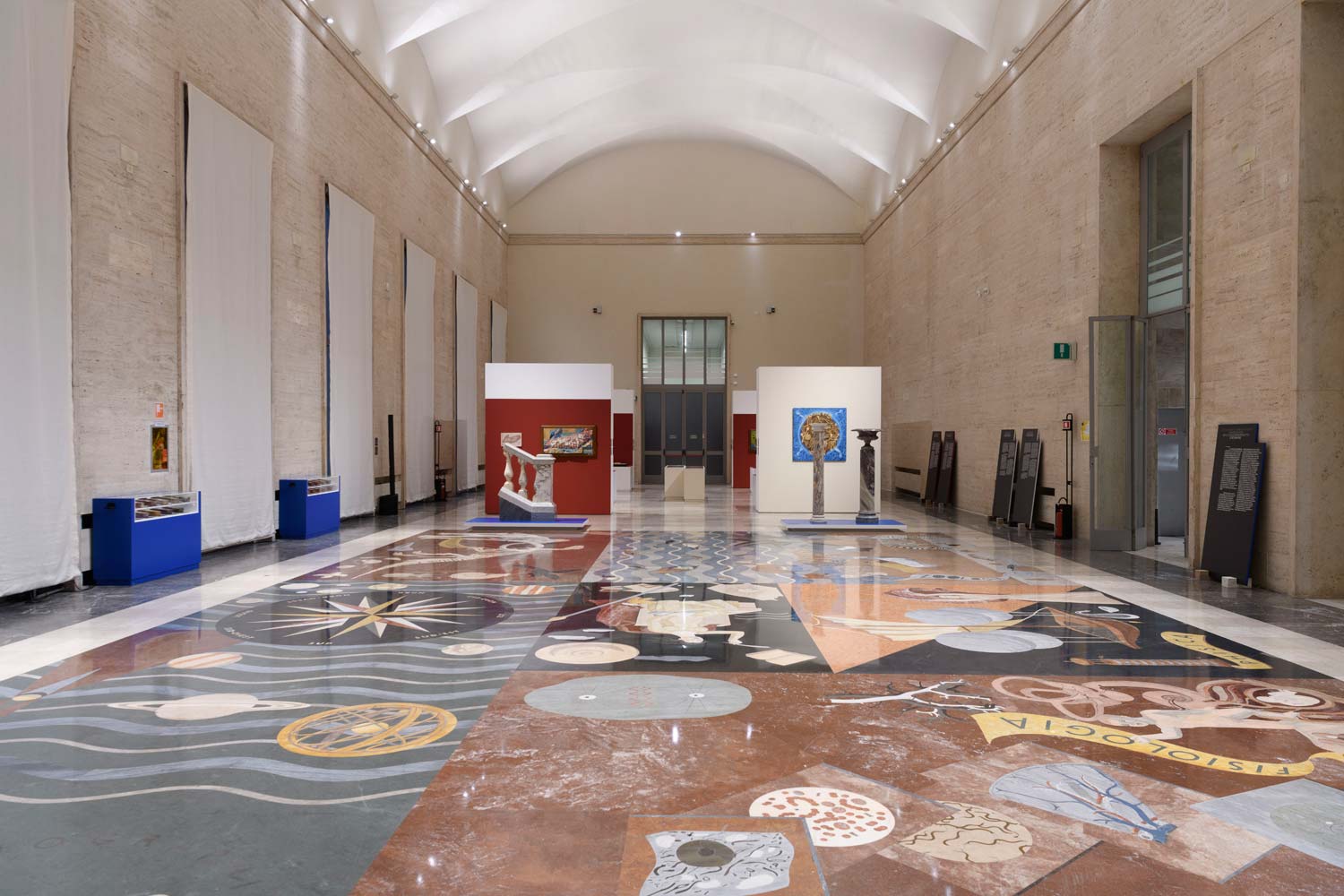A multispecies museum: this is the goal of the Museum of Civilizations in Rome , which, starting Dec. 14, 2022, will present a new exhibit dedicated to the paleontological and litho-mineralogical collections of ISPRA-Istituto Superiore per la Protezione e la Ricerca Ambientale. The itinerary, entitled Animals, Plants, Rocks and Minerals: The ISPRA Collections > Towards a Multispecies Museum, set up in the Hall of Honor on the second floor of the Palace of Sciences, is designed as an introduction to the history and research methods of these collections, and is the start of the progressive musealization of ISPRA’s collections at the Museum of Civilizations, which will be completed by 2024 on the second floor of the museum, complementing and completing the pathway of the prehistoric collections. The project is the result of collaboration between the General Directorate of Museums of the Ministry of Culture, through the Museum of Civilizations, and ISPRA-Istituto Superiore per la Protezione e la Ricerca Ambientale/National System for Environmental Protection, with the support of ALES-Arte Lavoro e Servizi spa.
ISPRA ’s collections consist of more than 150,000 animal and plant fossils, rock and mineral samples, geological surveys, scientific instruments, busts, portraits, memorabilia and documentation that formed the Paleontological, Litho-Mineralogical and Historical Collections of the Geological Survey of Italy. Taken together, these collections document the activities of scholars who, in accordance with the positivist thinking of the 19th century, assigned science an indispensable role vis-à-vis the emergence of a modern industry, placing human beings and their control of the natural environment at the center of possible processes of historical and social development, which today it is urgent to investigate.
As with the prehistoric collections, the Museum of Civilizations therefore proposes an interpretation of these collections as a possible premise for a multi-species anthropological museum, that is, one that documents the forms of coexistence among animal, mineral and plant species and draws from them stresses that contribute to resetting our relationship with the ecosystem in which we, as humans, also coexist with other species. To initiate these reflections, the Museum of Civilizations is offering a series of in-depth activities organized in collaboration with a plurality of experts and other institutions, starting with the inauguration.
Interweaving science, the humanities and social sciences, art and speculative thinking, the proposed activities will look in particular at the notion elaborated by philosopher and biologist Donna Haraway of “compost” and “composting,” which is the result of a biological process (the oxidation and humification of organic matter by micro- and macro-organisms) that refers back to the concepts of soil, waste and fertility. By rediscovering the internally transformative capacity of matter, the Science Salon thus reconfigures itself as the fertile and vital environment in which to prefigure the infinite potential arising from the alliance between all forms of the living and the genesis of hybrid and interdisciplinary forms of knowledge.
On the occasion of the inauguration, the monumental marble inlay that Mario Tozzi (Fossombrone, 1895 - Saint-Jean-du-Gard, 1979) created in the early 1940s in the context of the decorative program dedicated to protagonists and histories of scientific disciplines in the Palazzo delle Scienze, designed to host the scientific exhibition of the 1942 Rome World’s Fair, also returns to shine, thanks to a new museographic lighting project. The inlay is made of Italian stone and marble, whose use for architectural and decorative purposes is also documented in the ISPRA collections.
Interventions by three contemporary women artists also enter into dialogue with the ISPRA collections in the tour: works by Adriana Bustos, Marzia Migliora and Otobong Nkanga put the exhibition into action through the perspectives provided by imaginative dialogues between different species, suggesting the possibility of new experiences of the objects on display and connecting their stories to current climatic and geological emergencies.
The opening day will be accompanied by a program of guided tours (from 2 to 5:30 p.m.) led by researchers and curators from ISPRA and the Museum of Civilizations, while the opening evening will feature-thanks to the support of Sector VI of the Ministry of Culture-a presentation of performance works by artist Marzia Migliora (Palazzo delle Scienze, Salone d’Onore, second floor, from 6 to 6 p.m:30) and by choreographer Boris Charmatz [terrain] curated by Matteo Lucchetti (Palazzo delle Arti e Tradizioni Popolari, Salone d’Onore, pirmo piano, from 6:45 to 8 p.m.), along with the Suth DJset, bar and finger food party, curated by NERO (Palazzo delle Arti e Tradizioni Popolari, Salone delle Colonne, second floor, from 8 to 10 p.m.).
 |
| Rome's Museum of Civilizations is set to become multispecies. New exhibit launches |
Warning: the translation into English of the original Italian article was created using automatic tools. We undertake to review all articles, but we do not guarantee the total absence of inaccuracies in the translation due to the program. You can find the original by clicking on the ITA button. If you find any mistake,please contact us.